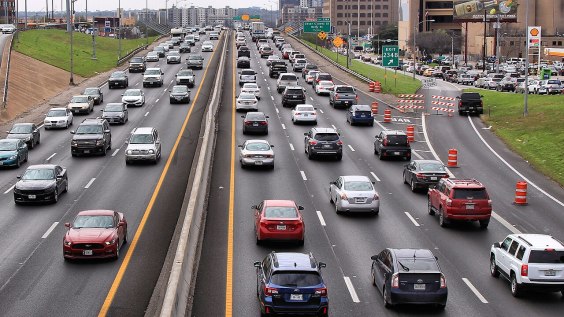Once again, the National Association of City Transportation Officials has proven what an agile, modern coalition of transportation agencies is capable of. It was just a year and a half ago that NACTO released its first Urban Bikeway Design Guide and today, it's released the first update to that guide.
NACTO's guide is far ahead of the industry standard, old-guard manuals: the Federal Highway Administration’s Manual on Uniform Traffic Control Devices and the American Association of State Highway Transportation Officials’ design guidelines.
NACTO's Urban Bikeway Design Guide was the first to provide engineering guidance for protected bike lanes. It also laid out four different kinds of bike signals, four types of striped bike lanes and a variety of intersection treatments and signage recommendations. The update, released today, also includes bike boulevards, which NACTO defines as "enhanced, low-stress, low-speed streets parallel to major roads." (Check out this Streetfilm to see bike boulevards in action.) All of the treatments NACTO highlights are in use internationally and around the U.S.
Meanwhile, AASHTO just published its first update in 13 years and is still not ready to embrace protected bike lanes. (Boulevards do get a mention.)
The speed with which updates are made and disseminated could be the biggest difference between the two guides. With just 18 months' turnaround, NACTO is updating its guide with the newest ideas. Meanwhile, AASHTO is hoping to get around to an update within five years, but given their history, it could be two or three times that long. It's not online, and it's not free -- you have to order a paper copy (how quaint!) for $144.
It's a clunky and old-school way to introduce the world to street safety treatments -- but then again, they're old-school street safety treatments too. NACTO has run away with the innovations.
NACTO's guide exists in the modern world of instantaneous communication, the 24-hour news cycle, and open information. They followed up the release of their first guide with a digital version less than two months later. Transportation Secretary Ray LaHood heaped praise upon the innovative guide and the Green Lane Project facilitated the implementation of NACTO's recommended treatments around the country.
And it's making a difference. Major cities are turning away from the traditional guides and looking to NACTO for advice on how to encourage cycling and design safer streets. Chicago Transportation Commissioner Gabe Klein says the guide has already made "a remarkable imprint on Chicago’s streets.” As the city moves forward with a major overhaul of the city's bike network, "the guide will serve as an essential blueprint for safe, active, multi-modal streets," Klein says.
But it's not only the Chicagos and the Portlands that are paying attention to NACTO. Phoenix Street Transportation Department Director Wylie Bearup says the second edition of the NACTO guide "will play a significant role in how the city of Phoenix designs and installs its growing network of bike lanes, routes, and boulevards." He says it will help the city accommodate cycling as it moves toward adoption of a new Complete Streets policy.






